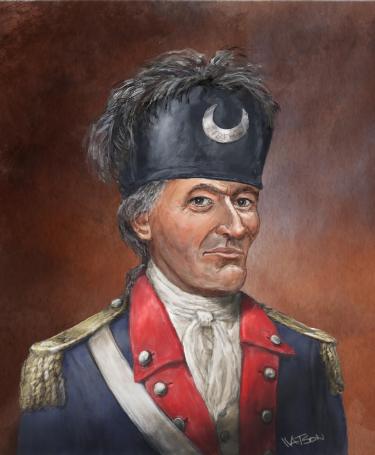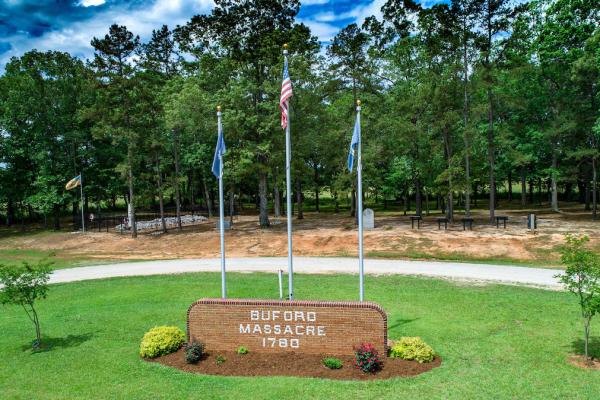
Brushstrokes of Battle: Dale Watson's Illustrations Bring the Revolutionary War to Life
Revolutionary War scholars and history buffs often lament, “If only photography had been invented a century earlier!” While there is a vast photo archive of the Civil War, there is a scant amount of visual documentation for the American Revolution. Formal paintings and prints from that era fall short of what a camera can capture, and they often glorify commanders or embellish events. That is why the work of Charleston illustrator Dale Watson is so important and revered. His meticulously researched and vivid images of Liberty Trail battlefields allow us to picture what happened on those hallowed grounds.

Dale began working on illustrations for the Liberty Trail in 2021. He was well-prepared for the job.
Even as a child I loved to draw soldiers. I was in the army for three years in the airborne infantry, and I feel that gave me a lot of insight into the everyday life of a soldier—mundane days of boredom, punctuated by brief times of high intensity and excitement. I am also an architectural illustrator, and that helps tremendously with knowing perspective and how historic buildings should be rendered.
When the American Battlefield Trust commissions Dale to do a new illustration for the Liberty Trail, we talk him through the battle and discuss the scene we want him to create. Our intention is to show visitors what the landscape looked like 250 years ago, convey the condition and appearance of the troops involved, and reveal a pivotal moment in the fight, such as the confrontation between Loyalist and Patriot forces at Biggin Bridge or the Patriots begging the British Legion for mercy at Waxhaws. When possible, Dale visits the battlefields to literally get the lay of the land, but he also relies on Google Earth, primary sources, as well as the knowledge of our historians.

Dale then makes one to three quick thumbnail sketches for the historians’ review. He then sends a more refined line drawing before starting color.
I love the fluid back-and-forth process of that stage. Once that’s approved, I begin the painting process. I often send a progress view when I’m about 80 to 90 percent done to see if there are any major changes needed. If not, I then finish and make my final tweaks and adjustment in Photoshop before sending out the final version. For the sake of time and the ability to make edits later, working digitally makes the most sense. However, I approach the process very much the same as if I were drawing or painting in oil or watercolors. I’m just using a stylus instead of a pencil or a brush.
In addition to representing the terrain and buildings as they appeared to warring soldiers centuries ago, Dale takes pains to accurately depict their uniforms, weapons, and camp equipment. Regimental coat buttons and hat cockades are part of the story. So are hunting shirts and rifles.

Through his work Dale has come to appreciate how those outside the military—Loyalist and Patriot citizens, women, Native people, and Blacks, both free and enslaved, endured the hardships of the Revolution. His illustrations allow us to envision the lives of all who participated in the struggle for independence and help us understand the role of the South—and particularly South Carolina—in helping to win the war.
Uncovering History
We invite you to visit the preserved locations along the Liberty Trail and to immerse
yourself in the extraordinary events that determined the fate of a nation.








